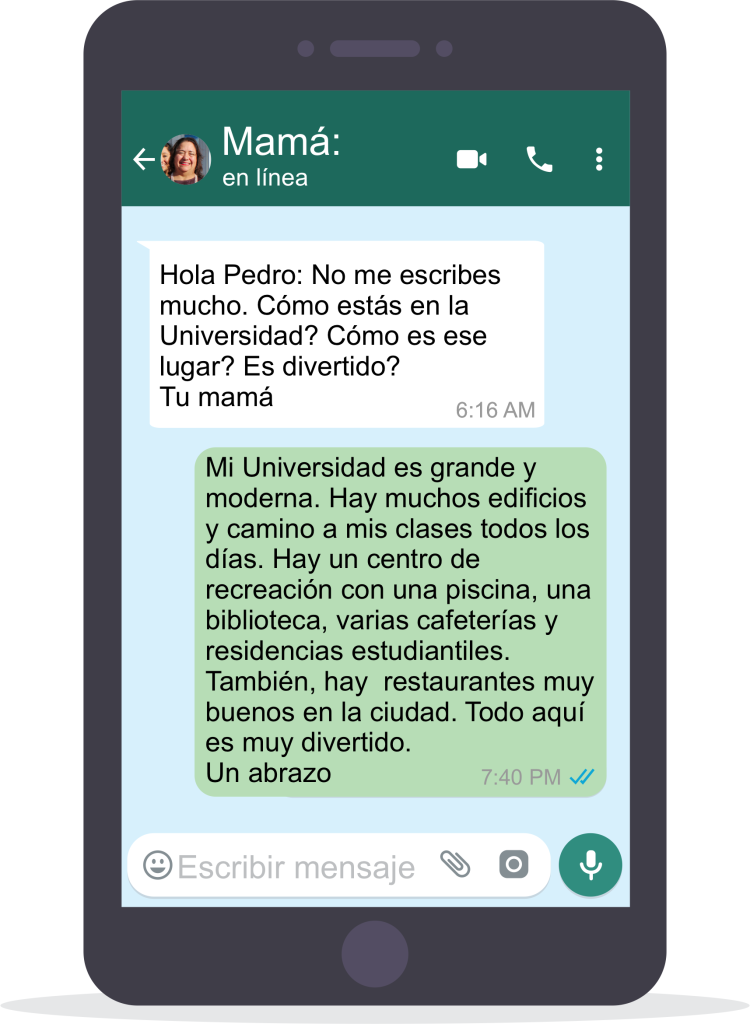12 Lesson 2A
1. Responder. Read the message exchange between Pedro and select all the amenities available at Pedro’s university.
En la Universidad de Pedro hay…
- Centro de recreación
- Biblioteca
- Ventanas
- Restaurantes
- Residencias estudiantiles
- Piscina
- Plazas
2. Emparejar. Look at the following pictures of different places around your town or university. Using the numbers, take turns asking you partner what each picture is. Your partner will look at the choices of vocabulary from the second column and tell you which letter corresponds to the picture.
Modelo:
| Estudiante A | Estudiante B |
| ¿Qué es número uno? | Es letra E. Es la biblioteca. |
| Fotos | Vocabulario |
1. 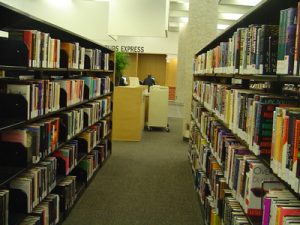 |
A. El centro de recreación / el gimnasio |
2.  |
B. La escuela |
3. 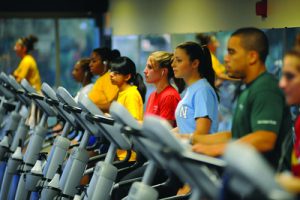 |
C. La iglesia |
4.  |
D. El cine |
5. 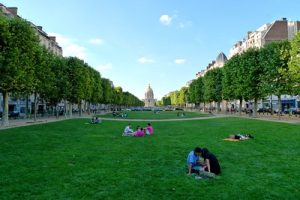 |
E. La biblioteca |
6.  |
F. El parque |
7. 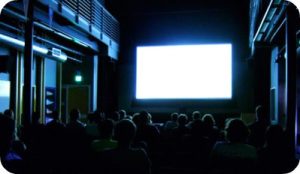 |
G. La piscina |
8.  |
H. El centro comercial |
3. Comparar. In groups, look at the map of Iowa City and compare it with the city or town where you grew up. Answer the following questions, and write down a list of the places in each city. Remember that un, una, unos, unas mean “a” or “some” and match the gender and number of the noun they modify.
- ¿Qué hay en el mapa de Iowa City?
- En el mapa de Iowa City hay…
- ¿Qué hay en tu ciudad / tu pueblo?
- En mi ciudad / pueblo hay…
- En mi ciudad / pueblo no hay…
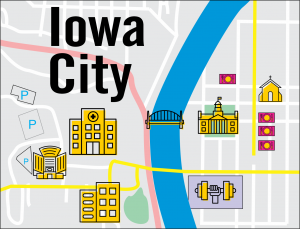
| Un estadio | Una iglesia | Un restaurante | Una residencia estudiantil |
| Un capitolio | Un gimnasio | Un centro de recreación | Un edificio |
| Un parque | Un hospital | Un puente (bridge) | Una playa |
4. Contestar. Watch the video about La Ciudad de Santiago de Chile and select the answer to the questions below.
- ¿Cómo se llama la ciudad? San Salvador / Bogotá / Santiago
- ¿Cómo es el centro histórico? Antiguo / Moderno / Bonito
- ¿Qué edificio hay alrededor de la Plaza de Armas? Museo / Biblioteca / Iglesia
- ¿Qué edificios hay cerca de la plaza? Restaurantes / Barrios / Museos
- ¿Qué tipo (type) de comida hay en los restaurantes del mercado central? Casera (homemade) / Moderna / Típica
5. Emparejar. Read the following sentences and select an adjective from the bank that best completes each sentence. Make sure the endings of the adjectives match the gender and number of the noun!
Modelo:
En mi universidad, hay un edificio feo.
| bonito | nuevo | típicos |
| históricas | moderna | feo |
- En mi universidad, hay una biblioteca _______.
- En mi barrio, hay unos supermercados _______.
- En mi pueblo, hay un parque ________.
- En mi ciudad, hay unas iglesias _______.
- En mi ciudad, hay un gimnasio _______.
6. Interactuar. Study the maps and learn about two barrios latinos in Chicago and Washington D.C.
Barrio 1. En Pilsen/Little Village, hay una panadería y cafetería llamada Kristoffer’s Café & Bakery, famosa por su pastel de tres leches. También hay un restaurante de tacos, Carnitas Uruapan, donde solo venden tacos de carnitas. Simone’s es un bar popular en el barrio, con murales y eventos culturales. Thalia Hall es un edificio histórico, ahora restaurado y usado como sala de conciertos y restaurante. Además, está el Museo Nacional de Arte Mexicano, con una gran colección de arte y eventos especiales.
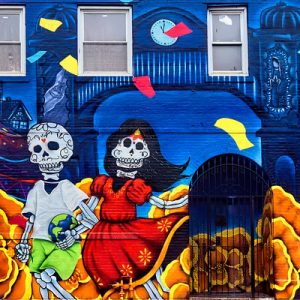
Barrio 2. Mount Pleasant es un barrio en Washington D.C. con arquitectura antigua, ambiente de pueblo pequeño y sabor hispano. Hay restaurantes y tiendas locales. En la calle Mount Pleasant Street NW, se pueden encontrar lugares para comer, como Ellē, un café y restaurante que ofrece comida deliciosa. También está el Purple Patch, donde se puede probar comida filipina. En este barrio, hay un estudio de yoga, Past Tense Yoga, y un mercado de agricultores los sábados. Se pueden probar pupusas salvadoreñas en Don Juan o Pupuseria San Miguel. También hay bares y restaurantes con música en vivo, como Haydee’s Restaurant. En Mount Pleasant, se puede explorar el parque Rock Creek Park. Además, hay una tienda de antigüedades llamada Logan’s Antiques.
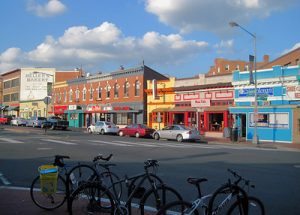
Paso 1. Fill in the blanks in the following questions with an adjective from the word bank. You can pick any adjective you want, but you will need to make it agree with the noun!
| Tranquila | Famosa | Agradable | Moderna | Fea |
| Histórica | Bonita | Típica | Pequeña | Grande |
- ¿Hay una biblioteca _______ en el barrio?
- ¿Hay una iglesia _______ en el barrio?
- ¿Hay un restaurante _______ en el barrio?
- ¿Hay una universidad _______ en el barrio?
- ¿Hay un museo _______ en el barrio?
- ¿Hay una discoteca _______ en el barrio?
- ¿Hay un parque _______ en el barrio?
- ¿Hay un supermercado _______ en el barrio?
Paso 2. You and your partner will each pick one of these two barrios (Pilsen/Little Village or Mount Pleasant). Look online for pictures associated with your neighborhood and/or explore it using Google Street View. Then take turns asking and answering questions from Paso 1 based on the information you find online.
Modelo:
| Estudiante A | Estudiante B |
| ¿Hay una biblioteca pequeña en el barrio? | (Looks at pictures for barrio 2). No, no hay una biblioteca pequeña en el barrio. |
7. Dibujar y escribir. Draw a basic map of the neighborhood or area near your dorm, house, or apartment. Next write a short paragraph (4-5 sentences) in Spanish about what there is (using hay) on your map. Be sure to use adjectives to describe each place and make sure everything agrees!
Modelo:
En mi mapa, hay muchos edificios grandes. También hay una iglesia histórica. En el centro, hay una plaza pequeña y restaurantes típicos.
8. Mirar. ¿Que está haciendo Félix?
Paso 1. Watch the video about what Félix is doing.
Paso 2. Ahora…put Félix’s actions in order based on what you see in the video, and remove the one that does not appear in it.
- Félix está volando.
- Félix está escuchando música.
- Félix está estudiando.
- Félix está hablando.
- Félix está caminando.
Paso 3. This verb form looks a little bit different from what we have seen until this point. What’s different? The second part of this verb resembles some -ar verbs you might already recognize: volar, escuchar, estudiar, hablar, caminar. Can you guess how to form the second part (the gerund) of this verb form based on what Felix is doing?
9. Conversar. Using the verbs provided in the bank, take turns asking your partner if they are doing something right now (presente progresivo). Be sure to answer using complete sentences and follow the model.
| Hablar español | Cenar | Tomar apuntes | Escuchar las preguntas |
| Terminar la actividad | Fumar | Mirar la tele | Caminar |
| Contestar las preguntas | Tocar el piano | Estudiar | ¿? Choose your own verb |
Modelo:
| Estudiante A | Estudiante B |
| ¿Estás tocando el piano? | No, no estoy tocando el piano. |
10. Completar. Read the following sentences, pick the verb that makes the most sense, and complete them using the present progressive.
- Los estudiantes en la biblioteca ____ ________ (hablar / tomar) en voz baja (quietly).
- En el parque, las chicas ___ ________ (caminar/ enseñar).
- Mi amiga Laura ___ ________ (caminar / escuchar) un podcast en español.
- Mis compañeros de clase ___ ________ (hablar / volar) español con el profesor.
- En este momento, Juan ___ ________ (estudiar / tomar) para su examen de matemáticas.
- Ahora, los estudiantes ___ ________ (cenar / tomar apuntes) para recordar (remember) la información importante.
11. Escribir. Take a minute to think about what you and your classmates are doing right now.
Paso 1: As a class, write a list of two things you are doing right now and two things you are not doing.
Modelo:
| Nosotros estamos escuchando a la profesora. | Nosotros no estamos bailando en la calle. |
Paso 2: Write your own list of four things you are doing and not doing. Make sure to use different verbs than what your class used together. Share that list with a partner and compare your answers.
12. Completar. Look at the previous activities and fill out the verb chart below for the verb “estar”. Remember which conjugations require accent marks and which do not.
| Subject pronouns |
The verb ESTAR |
| Yo | … |
| Tú | … |
| Usted/Él/Ella | … |
| Nosotros/as | … |
| Vosotros/as | estáis |
| Ustedes/Ellos/Ellas | … |
13. Completar. What is everyone in the class doing right now? It’s time to get creative!
Paso 1. Fill in the blanks in the following table to explain what different people in your class are doing right now. These can be true or pretend.
Modelo:
| El profesor… | está almorzando una pizza muy grande. |
| La profesora… | |
| Yo… | |
| Mis amigas… | |
| El payaso (the class clown)… | |
| Nosotros… |

